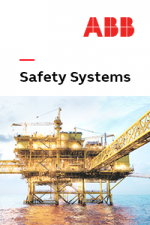- Russian Dam Disaster: Assessing the Cost of Failed Safety Practices
- Analyzing the Human Element of the Russia Dam Disaster
- Turbine 2: How a Track Record of Uncertainty Led to Disaster
- Russian Dam Disaster: A Reckoning for Bypassed Safety
- When Running People Past Their Breaking Point Effects Safety: The Bayer Crop Science Incid…
Safety Instrumented Systems Basic Performance Requirements
Keys to System Implementation
Older safety systems were a series of individual safety loops: a sensor connected to a logic solver, which activated a final control element. If a level sensor in a tank detected that the liquid was too deep, it sent a signal to its logic solver to close the inlet valve.
There could be dozens or hundreds of such loops in a process unit, they functioned independently and might not even be connected to each other. Today’s systems are far more integrated, although they retain the functional independence of older versions.
Today’s systems are also driven by a different set of safety systems driven by performance requirements formed around these areas:
1. Hazard Understanding—Without a thorough grasp of the risk profile of your plant, it will be impossible to determine the scope of your safety system.
2. Technology Diversity—Safety systems should not depend on one layer, nor should they depend on a single type of technology for a given type of measurement.
3. Systematic Safeguards—You need to understand how your safety system has been configured and the nature of the supporting software. Make sure you are convinced it can achieve the necessary SIL level.
4. Availability—HFT (hardware fault tolerance) has been the traditional approach for ensuring reliability, but it is expensive and not always necessary. Other options are now available that can accomplish much of the same capability.
5. Separate, Interfaced, or Integrated—Individual isolated safety loops are being supplanted by more integrated safety systems that still retain their ability to function independently.


